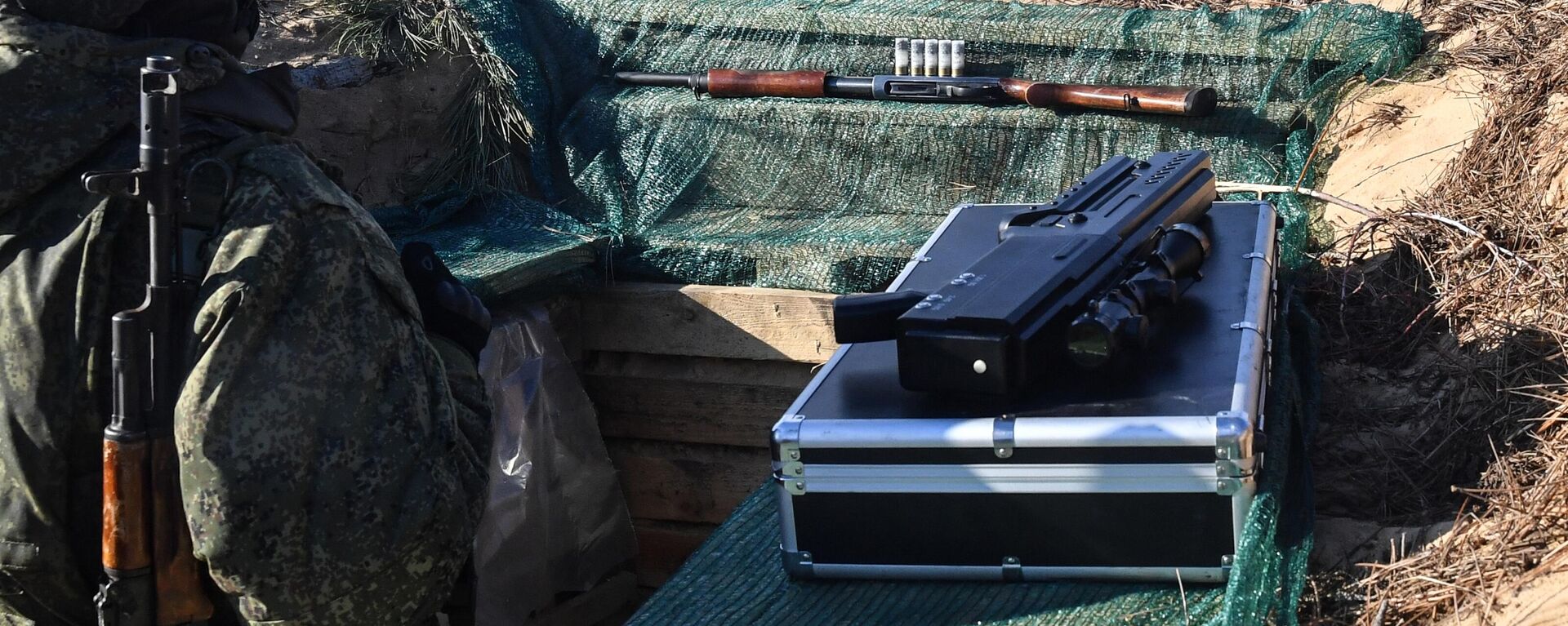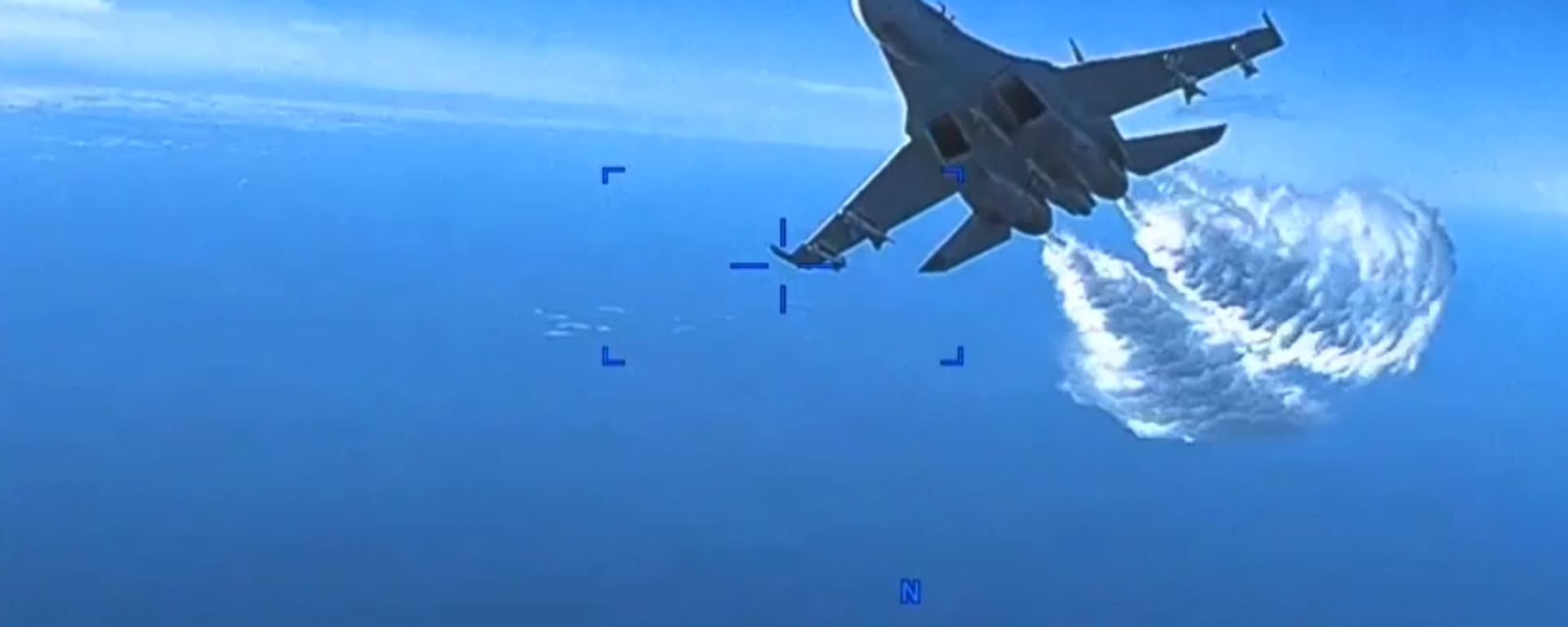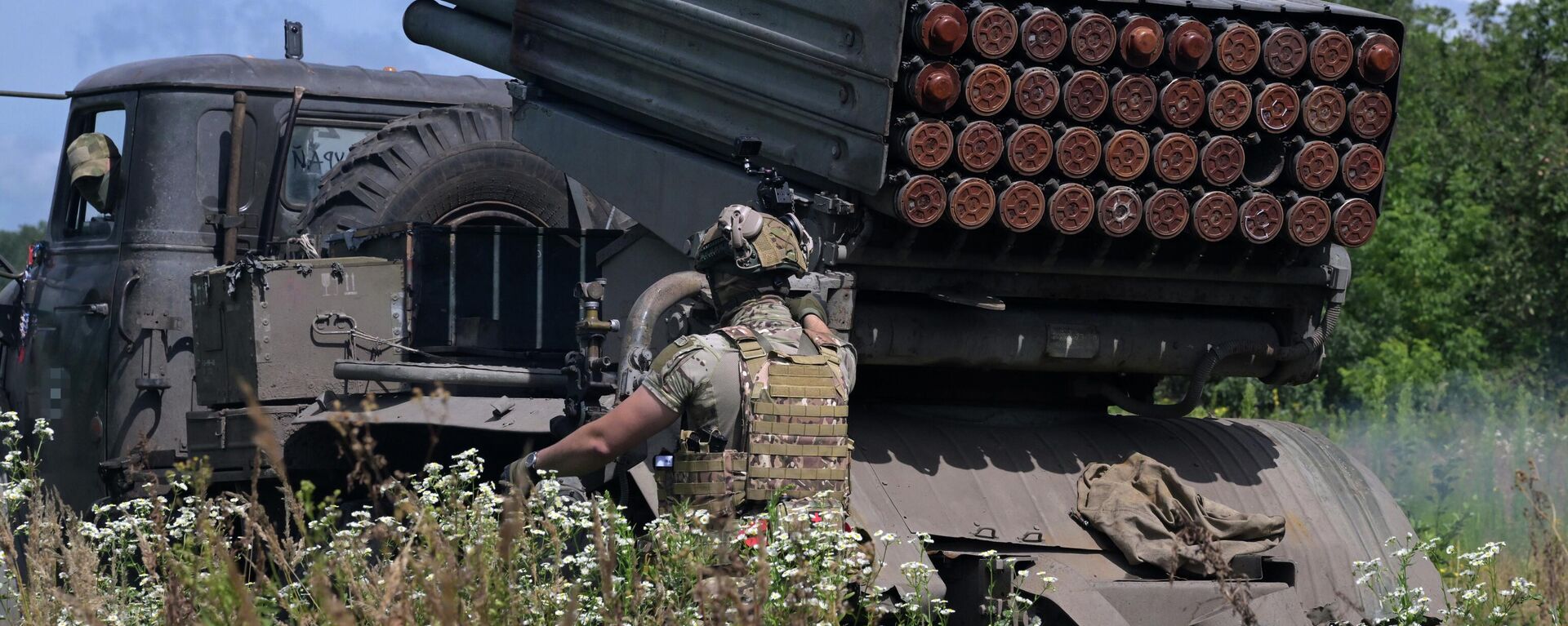https://sputnikglobe.com/20230815/why-us-drones-prove-useless-in-ukraine-1112615946.html
Why US Drones Prove Useless in Ukraine
Why US Drones Prove Useless in Ukraine
Sputnik International
Much lauded US drones don't look handy for Ukraine military tasks which require affordable, manageable and expendable unmanned aerial vehicles (UAVs).
2023-08-15T15:03+0000
2023-08-15T15:03+0000
2023-08-15T15:03+0000
ukraine
russia's special operation in ukraine
joe biden
russia
china
us department of defense (dod)
nato
mq-9 reaper
bmp-2
bmp-3
https://cdn1.img.sputnikglobe.com/img/106041/77/1060417779_0:360:1389:1141_1920x0_80_0_0_8f08219ef65bbdf9ba5f21702ab2e21c.png
After China banned exports of long-range remotely-piloted aircraft to Ukraine, US military experts found that American arm-makers have nothing to offer the Ukrainian military to fill the gap. On one hand, US defense-tech firms produce drones with a price tag starting from $16,000, well above China's DJI Mavic UAVs that cost around $2,000 or even less.What's more, according to the US mainstream press, some US defense contractors who have spent months testing their drones in Ukraine have now decided to leave their drones in storage. The crux of the matter is that despite "outstanding performance characteristics" their highly-sophisticated equipment couldn't perform appropriately in Ukraine's tough battlefield conditions.American arms manufacturers have long been focused on qualitative superiority of their systems while their Russian and Chinese peers concentrated on functionality and quantity, as per David T. Pyne, an EMP Task Force scholar and former US Department of Defense officer.According to Pyne, Russia appears to have a much more cost-effective military budget than the US has "because its procurement, manufacturing and personnel costs are lower."How Could Russia Counter US Drones?Russia's electronic warfare (EW) systems, air defenses and aircraft reportedly pose yet another challenge to NATO-grade unmanned vehicles.If Russian jammers fail to disable Ukrainian drones, the nation has some other cards up its sleeve, according to the military expert.Last but not least, Russian warplanes have also demonstrated capabilities of intercepting large combat and reconnaissance UAVs. The drone was flying with its transponders turned off in the direction of the Russian border. After the UAV violated the boundaries of the area of the temporary regime for the use of airspace, established for the purpose of conducting a special military operation, the Russian Su-27 fighter jets rushed to the area to intercept the intruder. The Reaper was brought down without the use of airborne weapons or coming into contact with the Russian aircraft.The US Air Force's footage from the Reaper's encounter with the Su-27s appeared to show the Russian planes approaching the drone and engaging in a fuel dump maneuver, which apparently caused the US drone's engine to stall.Earlier this month, a Russian Su-30 fighter jet was scrambled to intercept a US MQ-9A Reaper drone as it approached Russian waters in the Black Sea. Having spotted the Russian jet, the Reaper fled the area and did not violate the country's airspace, as per the Russian Ministry of Defense.Ukraine's Botched Counteroffensive a Wake-Up CallIt raises the question whether ramped-up drone supplies to the Ukrainian military could anyhow change the balance of power on the ground. Even the US mainstream press, which used to laud Ukraine's military prowess and resourcefulness, has now changed the tone to a gloomy one.The military expert expects that the Ukraine conflict will end quicker than Biden administration officials project."In my assessment, Ukraine will likely be forced to accept an armistice agreement along the line of control that exists at the time of a cease-fire no later than March of next year, particularly given the fact that US public support for any additional financial, military or even humanitarian support for Ukraine has decreased to only 45% pressuring the US Congress to reduce any future assistance to the bare minimum," Pyne concluded.
https://sputnikglobe.com/20230529/what-are-anti-drone-systems-and-how-do-they-work-1110774045.html
https://sputnikglobe.com/20230731/could-russian-electronic-warfare-systems-mute-ukrainian-starlink-1112306615.html
https://sputnikglobe.com/20230317/dont-fear-the-reaper-how-can-heavy-drones-be-detected-identified-and-brought-down-1108508647.html
https://sputnikglobe.com/20230804/ukraines-attrition-rate-suggests-counteroffensive-is-over-1112393002.html
https://sputnikglobe.com/20230809/ukraine-defeat-ominous-to-team-biden-admitted-by-us-press-1112488800.html
ukraine
russia
china
Sputnik International
feedback@sputniknews.com
+74956456601
MIA „Rossiya Segodnya“
2023
News
en_EN
Sputnik International
feedback@sputniknews.com
+74956456601
MIA „Rossiya Segodnya“
Sputnik International
feedback@sputniknews.com
+74956456601
MIA „Rossiya Segodnya“
us drones, us drones don't cut it for ukraine, kamikadze drones, chinese drones ukraine, black hornet drone, reaper drone, russian electronic warfare, russian ew, russia jamming drones, drone swarms, war in ukraine, ukrainian counteroffensive, ukraine offensive failed
us drones, us drones don't cut it for ukraine, kamikadze drones, chinese drones ukraine, black hornet drone, reaper drone, russian electronic warfare, russian ew, russia jamming drones, drone swarms, war in ukraine, ukrainian counteroffensive, ukraine offensive failed
Why US Drones Prove Useless in Ukraine
Much-lauded US drones don't appear too handy for Ukraine's military tasks, which require affordable, manageable and expendable unmanned aerial vehicles (UAVs).
After China banned exports of long-range remotely-piloted aircraft to Ukraine, US military experts found that American arm-makers have nothing to offer the Ukrainian military to fill the gap.
On one hand, US defense-tech firms produce drones with a price tag starting from $16,000, well above China's DJI Mavic UAVs that cost around $2,000 or even less.
What's more, according to the US mainstream press, some US defense contractors who have spent months testing their drones in Ukraine have now decided to leave their drones in storage. The crux of the matter is that despite
"outstanding performance characteristics" their highly-sophisticated equipment couldn't perform appropriately in Ukraine's tough battlefield conditions.
American arms manufacturers have long been focused on qualitative superiority of their systems while their Russian and Chinese peers concentrated on functionality and quantity, as per David T. Pyne, an EMP Task Force scholar and former US Department of Defense officer.
"During the latter stages of the Cold War between the US and the Soviet Union, the US focused on producing more expensive high-tech weapon systems that were qualitatively superior to Soviet systems in most areas while the Soviets more than compensated for US technological superiority by outproducing the US and its NATO allies by a wide margin. While Russia has caught up with the US technologically, I think the same Cold War-era mentality that quality is more important than quantity continues to hold true here in the US as we continue to prioritize more high-tech equipment even though it costs a lot more money to produce," Pyne told Sputnik.
According to Pyne, Russia appears to have a much more cost-effective military budget than the US has "because its procurement, manufacturing and personnel costs are lower."
How Could Russia Counter US Drones?
Russia's electronic warfare (EW) systems, air defenses and aircraft reportedly pose yet another challenge to NATO-grade unmanned vehicles.
"Russian electronic warfare capabilities remain the best in the world across the electromagnetic spectrum," the EMP Task Force scholar stressed. "I think that Russian EW systems remain highly effective against US-built drones although media reports indicate that the US is helping Ukraine learn how to more effectively counter Russian GPS jamming equipment, likely reducing the percentage of Ukrainian drones it can successfully jam down to perhaps eighty percent."
If Russian jammers fail to disable Ukrainian drones, the nation has
some other cards up its sleeve, according to the military expert.
"Russia has developed counter-drone radars to detect and target incoming drones using several Counter-Unmanned Aerial System (C-UAS) weapon systems capable of shooting down Ukrainian drones which travel relatively slowly and thus are vulnerable to a wide range of Russian anti-drone weapon systems," said Pyne. "Some of these include vehicle-mounted dual-purpose NSV 12.7mm and KPVT 14.5mm heavy machine guns and 30mm autocannon mounted on Russian BMP-2, BMP-3 and BTR-90 infantry fighting vehicles as well as Pantsir-S1M air defense missile and gun systems, which are designed be used against aircraft, ground vehicles and enemy troops. Others include Russia’s new Derivation 57mm self-propelled anti-armor/anti-drone weapon system."
Last but not least, Russian warplanes have also demonstrated capabilities of intercepting large combat and reconnaissance UAVs.
In mid-March, the Russian Aerospace Forces detected an unmanned US aerial MQ-9 Reaper over the Black Sea in the region of the Crimean peninsula. The MQ-9 Reaper is a reconnaissance and attack drone with a wingspan of 20 meters (66 feet), a maximum weight of 4.7 tonnes and an endurance of 27 hours.
The drone was flying with its transponders turned off in the direction of the Russian border. After the UAV violated the boundaries of the area of the temporary regime for the use of airspace, established for the purpose of conducting a special military operation, the Russian Su-27 fighter jets rushed to the area to intercept the intruder. The Reaper was brought down without the use of airborne weapons or coming into contact with the Russian aircraft.
The US Air Force's footage from the Reaper's encounter with the Su-27s appeared to show the Russian planes approaching the drone and engaging in a fuel dump maneuver, which apparently caused the US drone's engine to stall.
Earlier this month, a Russian Su-30 fighter jet was scrambled to intercept a US MQ-9A Reaper drone as it approached Russian waters in the Black Sea. Having spotted the Russian jet, the Reaper fled the area and did not violate the country's airspace, as per the Russian Ministry of Defense.
Ukraine's Botched Counteroffensive a Wake-Up Call
It raises the question whether ramped-up drone supplies to the Ukrainian military could anyhow change the balance of power on the ground. Even the US mainstream press, which used to laud Ukraine's military prowess and resourcefulness, has now
changed the tone to a gloomy one.
"The Western media is increasingly reporting on the fact that Ukraine’s costly summer counteroffensive is failing badly and the situation for Ukraine is becoming increasingly dire," said Pyne. "A recently published report credibly argues that Ukraine has lost at least 200,000 soldiers killed in action to date and explains why it is more advantageous for Russia to remain on the defensive to continue to exhaust Ukrainian military forces before it goes back on the offensive in the early fall or winter after Ukraine’s counteroffensive peters out and its army reserves have been expended."
The military expert expects that the Ukraine conflict will end quicker than Biden administration officials project.
"In my assessment, Ukraine will likely be forced to accept an armistice agreement along the line of control that exists at the time of a cease-fire no later than March of next year, particularly given the fact that US public support for any additional financial, military or even humanitarian support for Ukraine has decreased to only 45% pressuring the US Congress to reduce any future assistance to the bare minimum," Pyne concluded.







